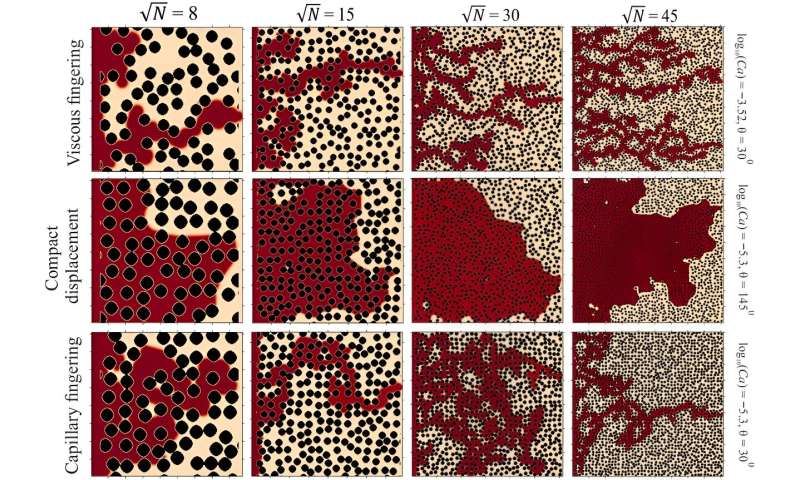Statistical research advances understanding of oil displacement

Center for Liquid Hydrocarbons submitted a new paper to Geoenergy Science and Engineering.
The search for a solution to the problem of representativeness of core material sizes, on which pore space structure studies, filtration characteristics measurement, and chemical studies are carried out, has been going on for several decades. The most widespread today is the deterministic approach, in which stepwise increase of the sample size is accompanied by measurement of its properties.
The essence of the statistical method is to conduct a large number of computational experiments performed on various porous structures. In this study, scientists considered the following oil displacement characteristics: hydrocarbon production efficiency, as well as water-oil and water-skeleton contact surfaces.
"The latter characteristics are especially important in the study of surfactant-polymer or acid flooding. Based on the collection of statistical data, the coefficient of variation is estimated and a conclusion is made whether the volume under study is representative or not. Digital models of terrigenous cores were tested," explains co-author, Senior Research Associate Timur Zakirov (Laboratory of Enhanced Oil Recovery).
At the end of the study, the scientists reported that core sizes of 2 mm or more were representative for estimating the area of water-oil and water-skeleton contacts. Moreover, with increasing flow velocity accompanied by an increase in capillarity number, a tendency to decrease the size of the representative volume was found. For the oil recovery factor, the size of the representative element reaches 5 mm or more.
"It was found that in the flow regime with capillary finger formation, i.e., under conditions of large interfacial tensions, typical sizes of digital core models of 10 mm are not sufficient to determine a representative elementary volume," adds the interviewee.
The results may be of use in determining flooding regimes and reagent use in oil recovery.
More information:
Representative elementary volumes for various characteristics of two-phase flows in porous media: A statistical approach
www.sciencedirect.com/science/ … ii/S2949891023006917
Provided by Kazan Federal University